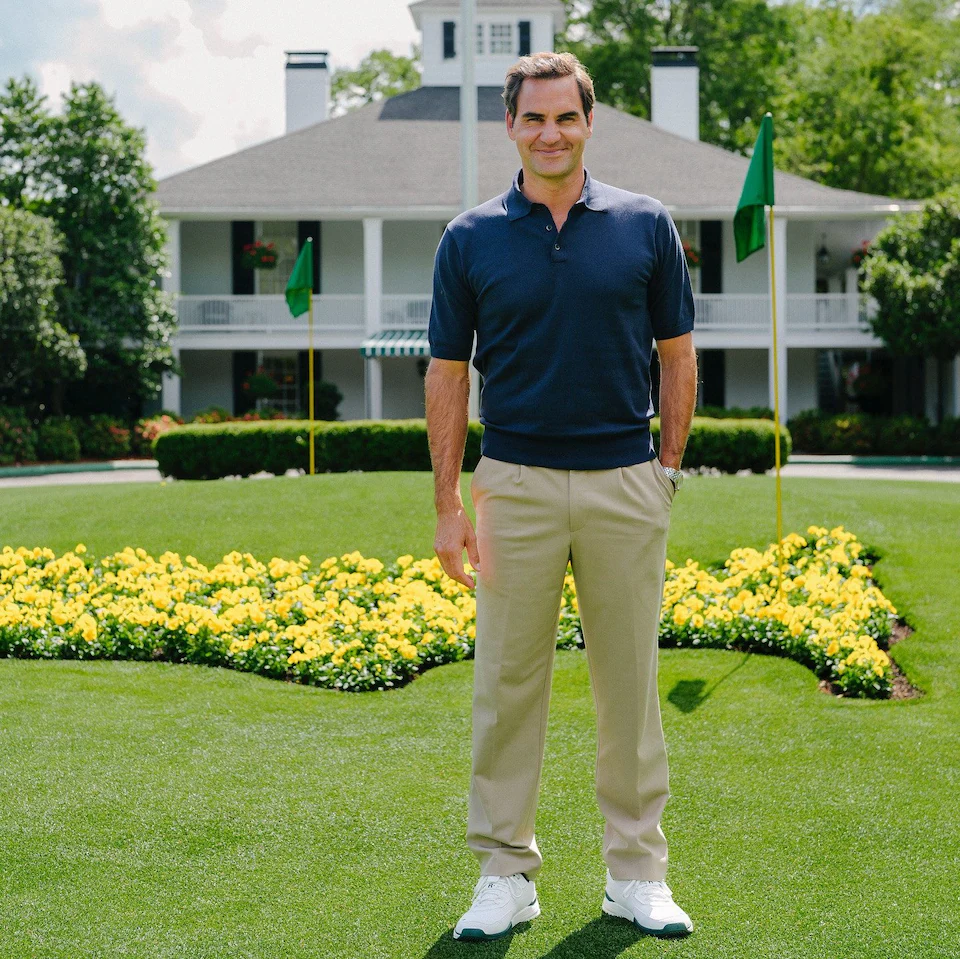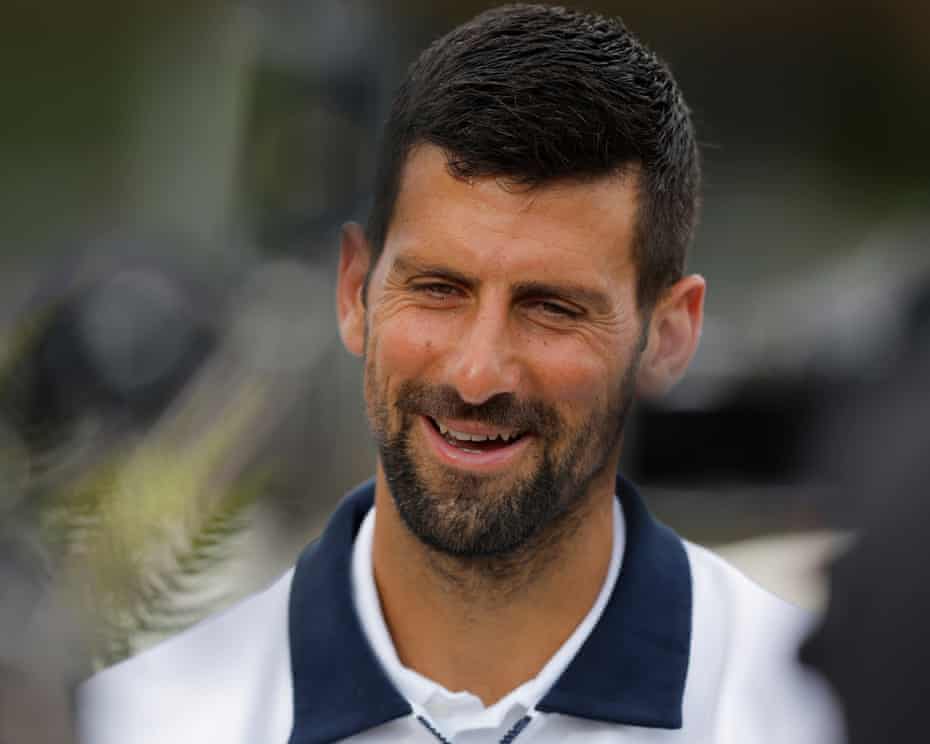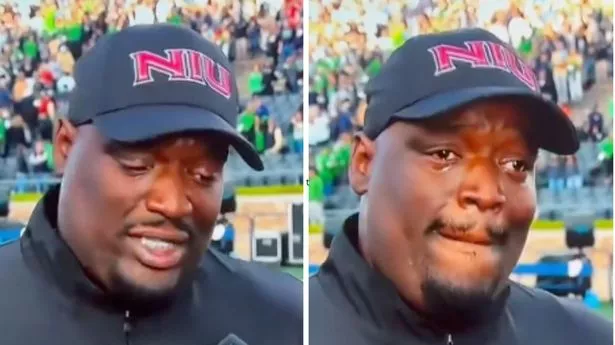Inside the 1886 Club, a ritzy pop-up cabin on the banks of the Savannah River in Augusta, Roger Federer was holding forth for Mercedes-Benz private clients hand-picked to savour a “once-in-a-lifetime” Masters experience. While this year marked his first visit to Georgia, he felt instantly at home, with both the man and the setting symbolising an aesthetic universally admired and yet impossibly out of reach. He sauntered on stage for an obligatory interview about his career, but what mattered most to the audience was that he had turned up in the first place. Such is life in his rarefied air: a realm where, beyond the niceties, all anybody wants to do is bask in his glory.
Even two and a half years into retirement, Federer exerts the same effect wherever he goes. Crowds do not swoon over him at a Coldplay concert in Zurich because of his talents on percussion, or go giddy at the 24 Hours of Le Mans over his dexterity with the ceremonial flag. They acclaim him purely as the ultimate sophisticate. It promises to be the same at Wimbledon over the next fortnight: Federer will be there, the All England Club confirms, but for the third straight summer not to coach or to commentate, merely to grace the place with his presence. When you are a personal friend of the Princess of Wales, the club’s patron, and when you can reduce Centre Court to raptures just by arriving in the royal box in a beige suit and polka-dotted tie, who needs to work for a living?
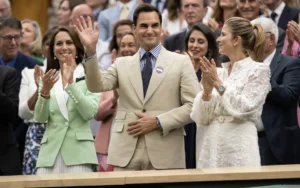
It is this strange alchemy on which a suite of luxury sponsors have leapt, transforming the most stylish player of his age, indeed any age, into the embodiment of opulent allure. Just as Anna Wintour, Vogue’s departing queen bee and a self-confessed Federer groupie, demands that he sit next to her at catwalks, so Mercedes supply him with their latest supercar every six months, calculating that the very sight of him at the wheel will provide that extra assurance of quality. Except it is not just a product he is selling, but an entire way of being. His vast endorsement portfolio – spanning everything from Rolex watches to Lindt chocolate, Sunrise mobile networks to Jura coffee machines – stands as testament to his ineffable Swissness.
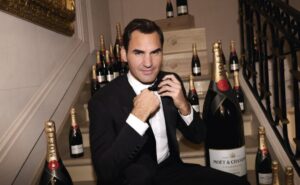
Even the country’s department of foreign affairs describes how Federer’s ambassadorial virtues are rooted in an image of “grace and refined excellence”. What makes him unassailable as a brand magnet, though, is his astounding longevity. By the time his 10-year contract with Uniqlo, the Japanese clothing giant, expires in 2028, he will have been out of the game for over half the deal’s duration. This was a problem for Nike, his backers for two decades, who believed that he retained his value only for as long as he actively competed. By contrast, Tadashi Yanai, Uniqlo’s founder, envisaged his seamless evolution from eight-time Wimbledon champion to middle-aged mannequin. And he was prepared to reward him as such, to the tune of £22 million a year.
It is an agelessness inconceivable with any other icon. In 2019, the year Federer reached the last of his 10 Wimbledon finals, he recorded annual earnings of £68 million, with 92 per cent of that amount derived from his commercial tie-ups. Nobody else on the global sporting rich list – not Lionel Messi, not Cristiano Ronaldo – could hold a candle to this proportion. LeBron James was the closest, on 59 per cent. As a gentleman of extravagant leisure, Federer’s status as king of the billboards has become only more bulletproof. In 2023, he collected £81 million despite having hung up his racket the previous year. The pattern is paradoxical: at the same time as Federer claims to feel ever further removed from his feats on court, the world’s most prestigious labels can hardly wait to renew their associations with him.
Central to this phenomenon is the fact that he remains untouched by scandal. While Tiger Woods, the one athlete who could once rival him for corporate pulling power, was torpedoed in 2009 by revelations of serial infidelity, Federer has endured as the safest of bets, with no lurid entanglements and no skeletons lurking in the closet. He and his wife Mirka, a Slovak-born former player briefly mentored by Martina Navratilova, have been inseparable since they shared their first kiss on the final day of the 2000 Sydney Olympics. Even the symmetrical make-up of their family, with two sets of twins – the girls, Myla and Charlene, were born in 2009, with boys Leo and Lenny arriving five years later – resembles a work of precision engineering.
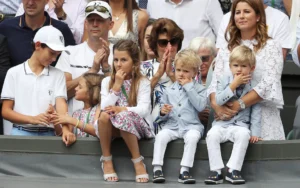
There is such a premium on putting Federer’s face to anything that he has amassed £29 million simply for promoting Barilla pasta. His apparent absence of any culinary credentials was no impediment to him signing on the dotted line, earnestly announcing in 2017: “Pasta has been a part of my daily life for so many years that this partnership was a natural.” The most eye-catching expression of this alliance came when, after Italy’s lifting of its most severe lockdown restrictions in 2020, he travelled to a small Ligurian town to engage two girls in a socially distanced game of rooftop tennis. Although it made for a sweet advert, it still seemed miraculous he was banking an eight-figure sum for this. As Andy Roddick told Federer’s biographer, Christopher Clarey: “The thing I’m most jealous of is not the skill and not the titles – it’s the ease of operation with which Roger exists.
Federer’s smooth adaptation to alien environments was on full display last year at Dartmouth College in New Hampshire, the smallest of America’s Ivy League universities, as he gave the graduation speech. The appearance was not without design: Isabella Godsick, the daughter of his long-time agent Tony, was among the graduates. In his address, delivered in a priestly robe befitting his investiture as a “doctor of humane letters”, he sought to dismantle the popular notion that everything he did was effortless. “I spent years whining, swearing, throwing my racket,” he explained, “before I learnt to keep my cool.
When eventually he mastered this art, making it seem as if the most outrageous shots could be conjured without a bead of sweat, his cachet in the eyes of the wealthiest suitors increased exponentially. The young firebrand who, in 2002, was offered a relatively meagre £440,000 annual retainer by Nike had morphed by 2010 into the calm connoisseur, a human advertising hoarding for the highest-end companies on the planet. Today, the vast industry of Roger Federer Inc. continues to thrive, peddling the seductive myth that you too can be like Roger, eating the same exquisite confectionery and sipping the same Moët champagne. Just as he did with his single-handed backhand, an art exhibit in itself, he is curating a style built on an elusive ideal.
To study him up close is to see how assiduously he maintains his own mystique, treating his thousandth sponsor meet-and-greet as if it is his first. In Augusta, he patiently made each of Mercedes’ top-tier clients feel like the most important person in the room. You wonder, however, if this life of schmoozing the high-rollers can sustain him indefinitely. Is it making him, dare one say it, a little listless? There was a suspicion of this at the Masters when, tiring of being asked about the verdant fairways, he said: “Enough already with the golf. Seriously, I would love to start playing tennis again two or three times a week, getting myself back on an exhibition court, maybe filling up a few nice stadiums around the world. The training, I miss it a bit, to be honest.
When Federer announced he was retiring with his usual immaculate choreography, a script with the ‘RF’ logo on his desk and replicas of Wimbledon’s golden Challenge Cup in the trophy cabinet behind him, he made an emotional promise to his fans, declaring: “I will never leave you.” In a sense, this pledge has yet to be fulfilled. Yes, he has had various valedictions at Grand Slam tournaments, but none with a racket in his hand. The only exception he made was for the Princess of Wales in 2023, as the two exchanged groundstrokes in a video acknowledging the Wimbledon ball boys and girls.
Federer’s caution has been due largely to the fragile condition of his left knee, which deteriorated to such an extent in his later years that his swansong, in doubles with Rafael Nadal at the 2022 Laver Cup in London, looked precarious until the last minute. According to Roddick, he was suffering so much at the 2021 event in Boston that his crutches were being hidden from public view. The pathos of that ending has kindled an intense public appetite for him to return, even in the hit-and-giggle exhibition format. As Roddick puts it: “Everyone wants a chance to see him one last time. He was hurt, we got him for a doubles match, and then that was it. It doesn’t feel like enough.
A persuasive argument, of course, is that Federer owes his disciples nothing, having elevated his craft to such an unheard-of standard that his footwork was likened to Nureyev’s and his artistic vision to that of Picasso. How much more breathless adulation does anyone need? The issue is that the demand to see him don his tennis whites again, even at almost 44, is off the charts. When he embarked on an express circuit of Latin America in 2019, he banked £7.7 million in six days, packing out stadiums from Santiago to Quito, Mexico City to Buenos Aires, with the fervour around his Argentina date compelling Diego Maradona to tell him: “You were, you are, and will always be the greatest. There is no other like you.
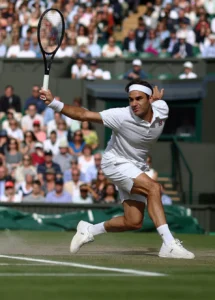
All this was accomplished without Nadal, his perfect foil, across the net. As soon as they joined forces in Cape Town in 2020, in aid of Federer’s foundation, the occasion drew over 51,000 people, the largest attendance ever recorded for a tennis match. You can imagine the rock-star reception they would attract if they decide, as men of independent means, to head out on the road for a reunion tour. This is why the idea holds such appeal for Federer, who, for all his sincere efforts at humility, has an acute appreciation of his worth. The grandeur of his entrances at Wimbledon in 2009, when he would peel off a multi-pocketed military jacket to reveal a diamond-white waistcoat with a golden Nike swoosh, still constitutes perhaps the most ostentatious flex in sport.
Federer has been desperate to imbue the event with passion and sporting significance, to the point of once instructing Alexander Zverev, in full view of the cameras: “I want a fist pump or a ‘let’s go’, every f—— point you win. And every point you lose, you f—— take it.” The irony was that he had never acted this way in team sport before, even when flying the flag for Switzerland at the Davis Cup. It illustrated the hollowness of the enterprise, with Federer trying to make a spectacle that essentially meant nothing look as if it meant everything. It is the fundamental problem with the Laver Cup, as it rolls on to San Francisco in September: that for its pretensions to be sport of substance, it serves little purpose beyond burnishing Federer’s cult of personality.
The pity is that he still resists any shift into television commentary, where he could offer a degree of technical expertise unparalleled in the booth. He has admitted that he did consider it, only shelving the plan when he realised how critical he would have to be of the players.
Perhaps his most impulsive move was to decide, six years ago, to invest in a then little-known Swiss footwear company called On, whose creators first experimented by crafting shoes from lengths of garden hose. Federer called them to arrange dinner, clarifying that this time he was seeking not sponsorship but a personal investment. Having negotiated three per cent equity, he used his international profile to turn a Zurich start-up into an £8.2 billion behemoth, with its own limited-edition range christened “The Roger”. When On was listed on the New York Stock Exchange in 2021, 31.1 million shares were sold at £17.47 each, giving Federer a stake worth £262 million – nearly three times the total he amassed in 24 years as a tennis professional.
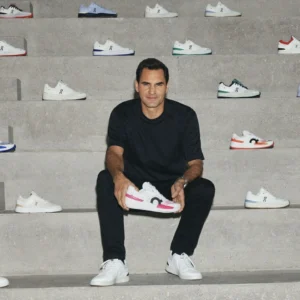
It is at this point that you wonder if Federer’s life is celestially ordained, with even his rare gambles somehow striking gold. The reality is more that he understands, better than just about any sports star in history, what his strengths are and exactly how he can monetise them. Even in elder statesman mode, he is tennis’s version of an omniscient being, hovering above all he surveys. Whether it is using shoes to catapult himself towards billionaire status, or enlisting singer Ellie Goulding to sing at his last match over a video montage of his greatest hits, Federer is the man who orchestrates his own drama, who writes the scripts of which nobody else could dream.
